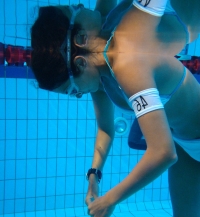Discipline
STATIC APNEA (STA) |
The freediver holds his breath for as long as possible with his respiratory tracts immerged, his body either in the water or at the surface. The maximum allowable depth is 3 meters in the performance.. What counts for the performance is the maximum time distance (in seconds) reached by the athlete.
|
|
DYNAMIC APNAE (DYN/DNF) |
The freediver travels in a horizontal position under water attempting to cover the greatest possible distance with the help of fins or a monofin or without fins. What counts for the performance is the maximum distance (in meters) reached by the athlete.
|
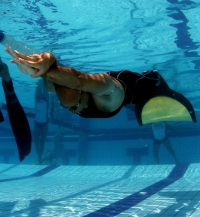 |
CONSTANT WEIGHT (CWT/CNF) |
The freediver descends with fins or monofin or without fins following a rope which drops to the bottom and he ascends in the same way. Touching the rope or pulling oneself on the rope more than once invalidates the performance. What counts for the performance is the maximum depth (in meters) reached by the athlete.
|
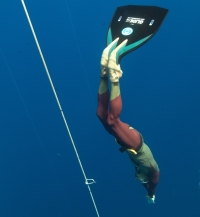 |
FREE IMMERSION (FIM) |
The freediver descends using a rope (pulling) which drops to the bottom and he ascends in the same way. What counts for the performance is the maximum depth (in meters) reached by the athlete.
|
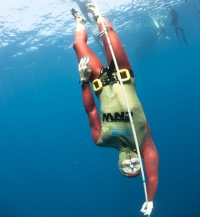 |
VARIABLE WEIGHT (VWT) |
In the variable weight the use of a maximum 30 kg ballast is allowed. The freediver descends holding himself to a ballast and, once he reaches the maximum depth, he lets it go. The freediver ascends using fins or monofin or pulling himself to the rope. What counts for the performance is the maximum depth (in meters) reached by the athlete.
|
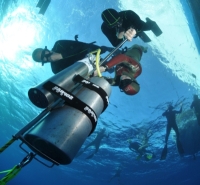 |
NO LIMITS (NLT) |
It is an evolution of the variable weight (VWT) and the freediver descends with the aid of a ballast which doesn’t have any weight limit. The ballast is usually attached to a “sled” which takes the athlete to the depth he wants to reach. The athlete usually ascends using an inflated balloon.
|
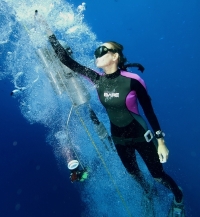 |
